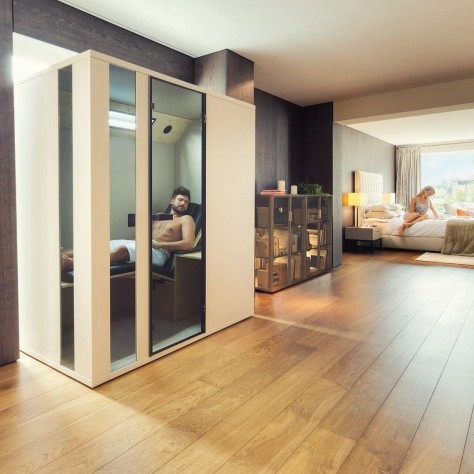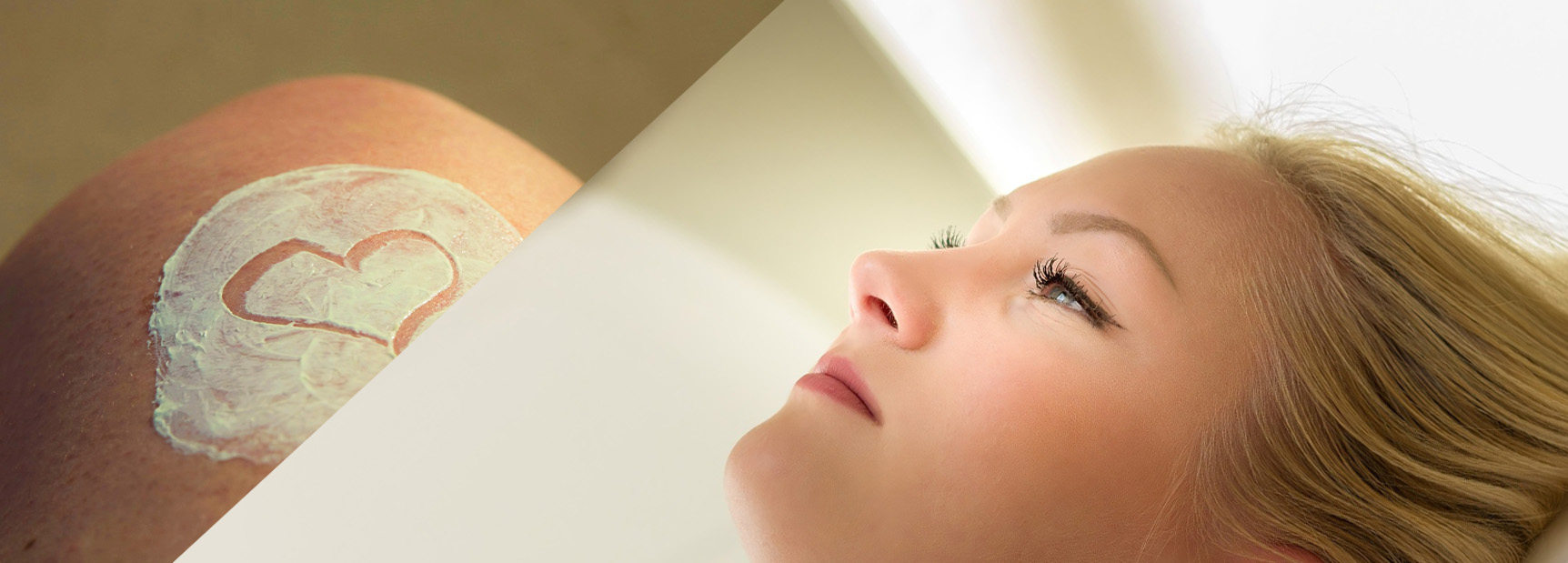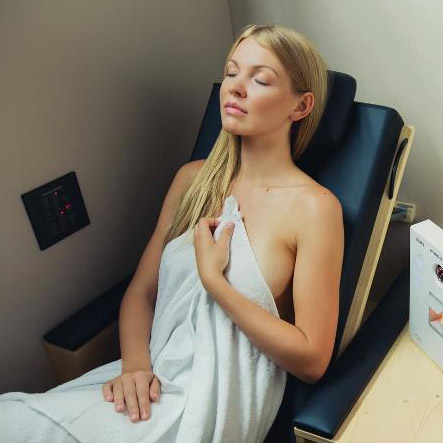Sauna and infrared cabin:
Understanding differences and advantages
Heat has been used for thousands of years to alleviate numerous physical and psychological complaints. Saunas and infrared cabins are popular wellness options that are known for their therapeutic and relaxing effects. However, there are significant differences between the two. Here is a compact comparison to help you decide which heat application is best for you.
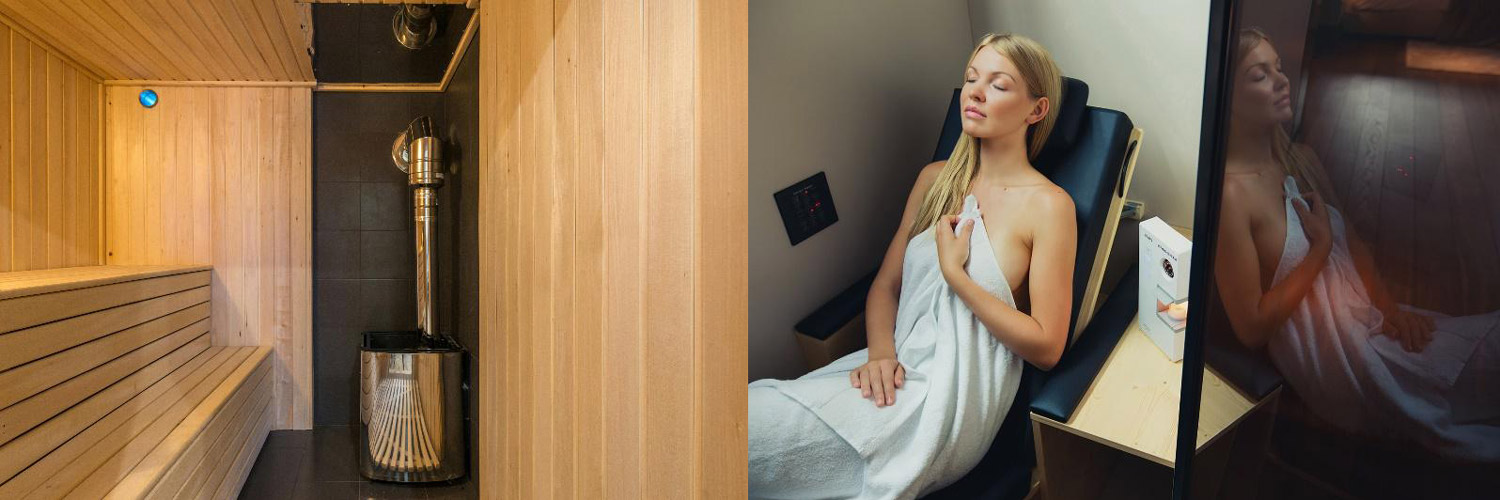
Comparison of sauna and infrared cabin
| Application information | Physiotherm infrared with low-temperature infrared technology | Sauna |
|---|---|---|
| Temperature range | 27°C to maximum 40°C | 50°C to 100°C |
| Preheating time approx. | none, ready for immediate use | up to 1 hour |
| Duration of application | 20-40 minutes | 10-15 minutes 2-3 repetitions |
| Frequency of use | daily possible | maximum 2 times per week recommended |
| Health aspects - effect |
|
|
| Operating costs | Examples of electricity consumption for an application of 45 minutes at an electricity price of 15 cents/kWh or 22 cents/kWh. 1-person cabin: approx. 1,400 watts - 1.050 kWh - €0.16 per application (or €0.23) 2-person cabin: approx. 1,500 watts - 1.125 kWh - €0.17 per application (or €0.25) | 10 times higher operating costs compared to the Physiotherm cabin |
Sauna - stimulation and thermoregulation of the body:
Sauna applications generally take place between around 50°C and 90°C, i.e. always above the thermoneutral zone. The aim of the correct use of sauna & co. is not to warm the body, but to trigger more or less strong stimuli on the vegetative system and the skin.
In the sauna, for example, the body absorbs more heat over its entire surface via conduction, convection (hot air) and infrared C radiation than it can release. Although the air is dry, its temperature is very high. The vapor pressure is therefore higher than that which the skin can build up. The sweat produced cannot evaporate, drips off and does not generate evaporative cooling. More and more blood is sent to the skin for cooling and less and less blood is available for the central circulation.
The cardiovascular load increases massively. If you leave the sauna in time, the blood in the skin cools down and is gradually made available to the circulatory system again. Whether a whole-body heat application is carried out at 50°C or 100°C makes no difference in terms of the heat regulation principle, although it does make a difference in terms of degree. An air temperature of over 50°C can be tolerated for up to an hour.
In the sauna, for example, the body absorbs more heat over its entire surface via conduction, convection (hot air) and infrared C radiation than it can release. Although the air is dry, its temperature is very high. The vapor pressure is therefore higher than that which the skin can build up. The sweat produced cannot evaporate, drips off and does not generate evaporative cooling. More and more blood is sent to the skin for cooling and less and less blood is available for the central circulation.
The cardiovascular load increases massively. If you leave the sauna in time, the blood in the skin cools down and is gradually made available to the circulatory system again. Whether a whole-body heat application is carried out at 50°C or 100°C makes no difference in terms of the heat regulation principle, although it does make a difference in terms of degree. An air temperature of over 50°C can be tolerated for up to an hour.
Infrared cabin - thermoneutral zone:
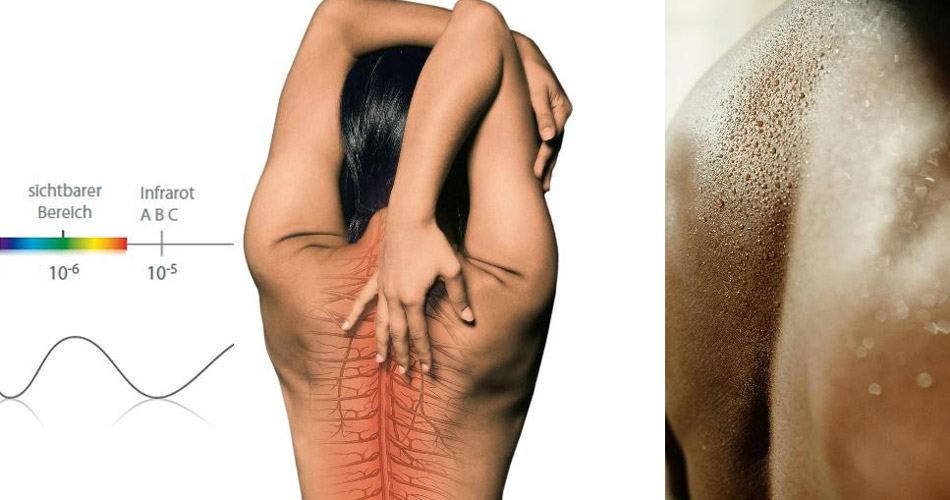
In low-temperature infrared technology, the body is in a thermoneutral zone (at approx. 30°C) - which in itself is not a heat application. The actual supply of heat takes place via only approx. 10 to 12% of the skin. In the thermoneutral zone, the body can release more heat to the environment via convection and radiation than it receives. If this is not sufficient, perspiration begins to form.
However, the sweat can evaporate and cools the skin - this is shown by the fact that the humidity in the cabin rises. If more heat is added, more sweat is produced over time than can evaporate. Sweat also drips off in the low-temperature infrared technology.
This type of infrared application is gentle on the cardiovascular system and can, among other things, contribute significantly to pain relief, muscle relaxation and mental well-being.
Sweating is one of the "draining" procedures (detoxification, purification) used in naturopathy. Sweat is formed from blood plasma and the body is tempted to use this to get rid of potential harmful substances. It is logical that warming applications are preferable from this point of view, as the flushing of the intercellular spaces (matrix) in the tissue of the body's shell (muscles, connective tissue, joints, fatty tissue) is significantly improved.
In addition to the beneficial physical effects of an infrared treatment, relaxation and calming of the vegetative nervous system through a complementary light bath, sound and comfortable sitting or lying on ergonomically shaped surfaces play a major role in supporting emotional balance and mental recovery.
However, the sweat can evaporate and cools the skin - this is shown by the fact that the humidity in the cabin rises. If more heat is added, more sweat is produced over time than can evaporate. Sweat also drips off in the low-temperature infrared technology.
This type of infrared application is gentle on the cardiovascular system and can, among other things, contribute significantly to pain relief, muscle relaxation and mental well-being.
Sweating is one of the "draining" procedures (detoxification, purification) used in naturopathy. Sweat is formed from blood plasma and the body is tempted to use this to get rid of potential harmful substances. It is logical that warming applications are preferable from this point of view, as the flushing of the intercellular spaces (matrix) in the tissue of the body's shell (muscles, connective tissue, joints, fatty tissue) is significantly improved.
In addition to the beneficial physical effects of an infrared treatment, relaxation and calming of the vegetative nervous system through a complementary light bath, sound and comfortable sitting or lying on ergonomically shaped surfaces play a major role in supporting emotional balance and mental recovery.
To summarize:
Although both saunas and infrared cabins offer significant health benefits, the choice depends on personal preference, space and cost considerations and health goals.
Physiotherm advice
We will help you choose the right infrared heat - because it's all about your HEALTH!
We will answer all your questions. Find out more about model selection, mode of operation and options in a brief, no-obligation consultation with our experts.
Tip for existing saunas:
If you have a traditional sauna and would also like to enjoy the benefits of infrared applications, or if you cannot decide between a sauna and an infrared cabin, we recommend the Physiotherm sauna upgrade - the retrofittable infrared element for your sauna.

Want to find out more?
Contact us and we will be happy to inform you in detail about the best heat for your health.
